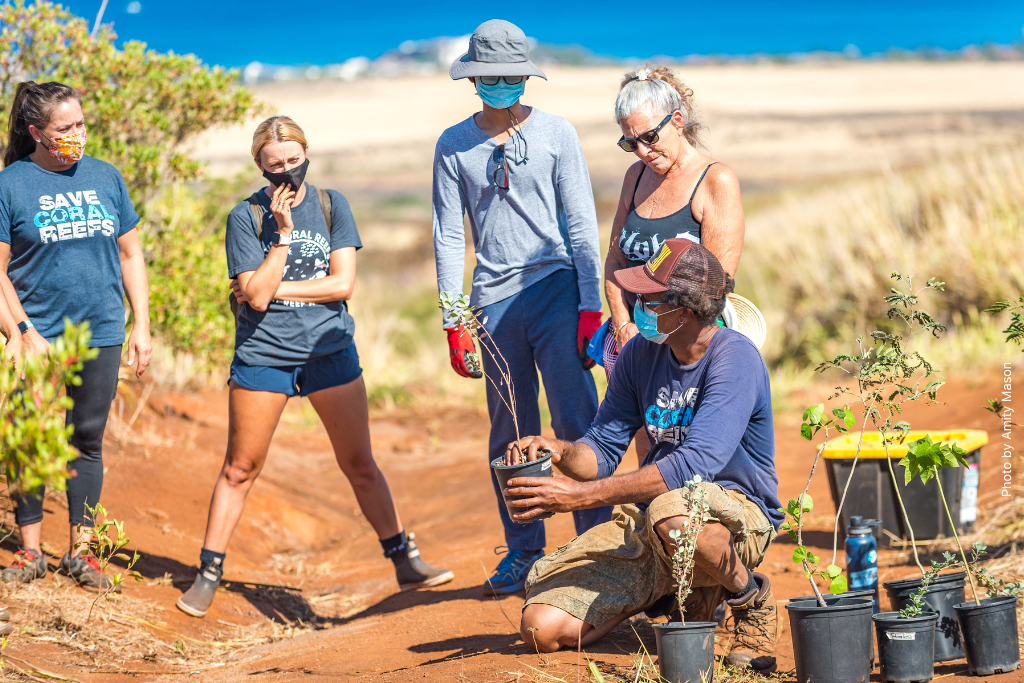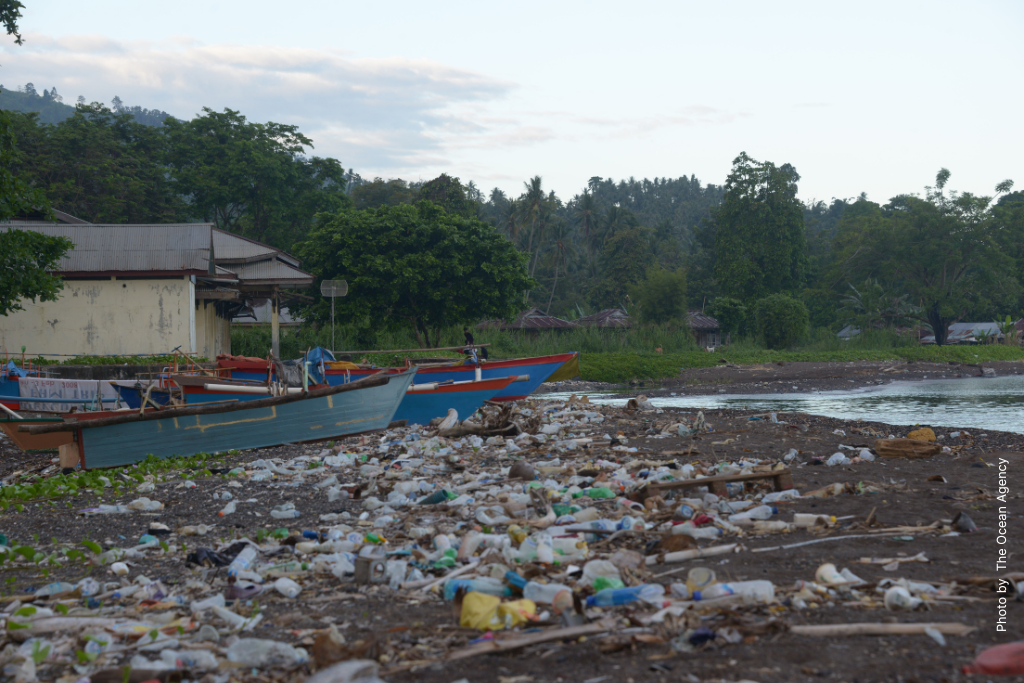By Ben Charo, Global Conservation Science Program Coordinator
Coral reefs face a difficult and uncertain future. According to a recent UN climate report, the Earth is currently on track to warm by 2.5 degrees Celsius by 2100, enough to wipe out 99% of reefs. We must reduce greenhouse gas emissions by nearly 50% in the next seven years to avoid this catastrophe. Meanwhile, local threats like pollution and overfishing, also pose serious challenges. Luckily, there are ways we can protect coral reefs AND address the climate crisis simultaneously. Here are three promising solutions:
Reforesting Degraded Lands
A remarkable 23% of global greenhouse gas emissions come from agriculture and land use. In fact, improving our land management strategies could achieve the same effect as decarbonizing all transportation across the globe, removing 7.7 gigatons of carbon dioxide from the atmosphere per year as of 2021.
Of all land-use emissions, half result from deforestation. Forests act as effective carbon sinks, capturing CO2 from the air and using it to build new plant tissue through photosynthesis. However, when trees are removed or burnt, often to make way for new agricultural lands, the carbon they store is released back into the atmosphere.
Traditional agriculture brings other woes as well, including excessive use of fertilizer and increased rates of erosion. During heavy rain events, nutrients and loose sediment can be carried to waterways and oceans where they have serious negative impacts on coral reefs. Sedimentation kills reefs by covering them and blocking the sunlight they need to photosynthesize. Nutrients, including those often found in fertilizer runoff, promote the growth of algae that may kill and displace corals entirely.
Fortunately, innovative land-use practices offer a greener and more reef-friendly path forward. The widespread use of agroforestry alone, for instance, could reduce the expected amount of carbon dioxide in the atmosphere by up to 23.94 gigatons. As we’ve learned from our work on Maui, restoring and reforesting abandoned farmlands can also be effective in reducing sediment runoff to nearby reefs and reviving native ecosystems.

Building and Managing Marine Protected Areas
While protecting ocean habitats and reducing emissions might not seem to go hand-in-hand, marine protected areas (MPAs) can actually have remarkable benefits for the climate as well as wildlife and coastal communities. For coral reefs, well-protected MPAs can prevent exposure to damaging fishing practices, facilitate the rebound of key fish species that keep reefs healthy, provide potential income to communities, increase fish catch, and more.
Lesser known are the benefits that marine protected areas can have for the climate, particularly through protecting seagrass and mangrove ecosystems. Seagrass meadows and mangrove forests are amazingly effective when it comes to sequestering carbon. Seagrasses constitute less than 0.1% of the global marine environment but, through trapping dead roots, leaves, and organic matter, bury 10% of ocean sediment-based carbon in their deep soils. Mangroves contribute disproportionately as well, occupying just 2% of marine environments but sequestering 14% of ocean carbon.
Seagrasses and native mangroves are also critical to coral reef health. Both are found in conjunction with reefs, providing critical nursery habitats for juvenile fish and improving water quality through trapping sediment and other pollutants. On the island of Roatán in the Bay Islands of Honduras, our partners at the Bay Islands Conservation Association (BICA) are actively replanting mangroves, restoring the crucial ecosystem services these forests provide.

Reducing Single-Use Plastics
Arguably the most infamous form of marine pollution, plastics constitute a tremendous problem for coral reefs and marine life. One 2018 study estimated that 11.1 billion plastic items were entangled across reefs in the Asia-Pacific region alone. That same study also concluded that corals in contact with these plastics experienced an 85% increase in likelihood of disease. Microplastics, microscopic plastic particles produced by the decay of larger pieces of plastic material, can abrade corals, impede their ability to feed, and make infection more likely. Plastics also pose serious issues for the many animals that call coral reefs home.
They are also terrible for the climate. Many plastics are made from fossil fuels and petrochemicals. From the extraction and transport of the materials necessary for plastic production, to manufacturing, to incineration, the plastic creation process is fossil-fuel intensive across all stages of production. There is even some preliminary evidence to suggest that plastics in the environment slowly release methane and ethylene (both greenhouse gasses) into the atmosphere as they decompose. A transition away from these materials would both dramatically curtail emissions over time and begin to address the severe issues posed to coral reefs by marine debris. To this end, CORAL is working hard to educate tourists and the tourism industry on the dangers of plastic pollution and other coral reef threats.

How You Can Help Curb Climate Change and Protect Coral Reefs
From urban planning, to carpooling, to forest protection, there are a wide range of creative solutions to reducing greenhouse gas emissions. You can help make a low carbon, reef-friendly future a reality by doing the following:
- Vote for policies and politicians that are committed to protecting our planet
- Support businesses that have clear sustainability commitments
- Donate to organizations like CORAL that are working to keep the health of our marine ecosystems intact
- Learn more about how to adopt reef-safe practices while traveling and in your everyday life.
